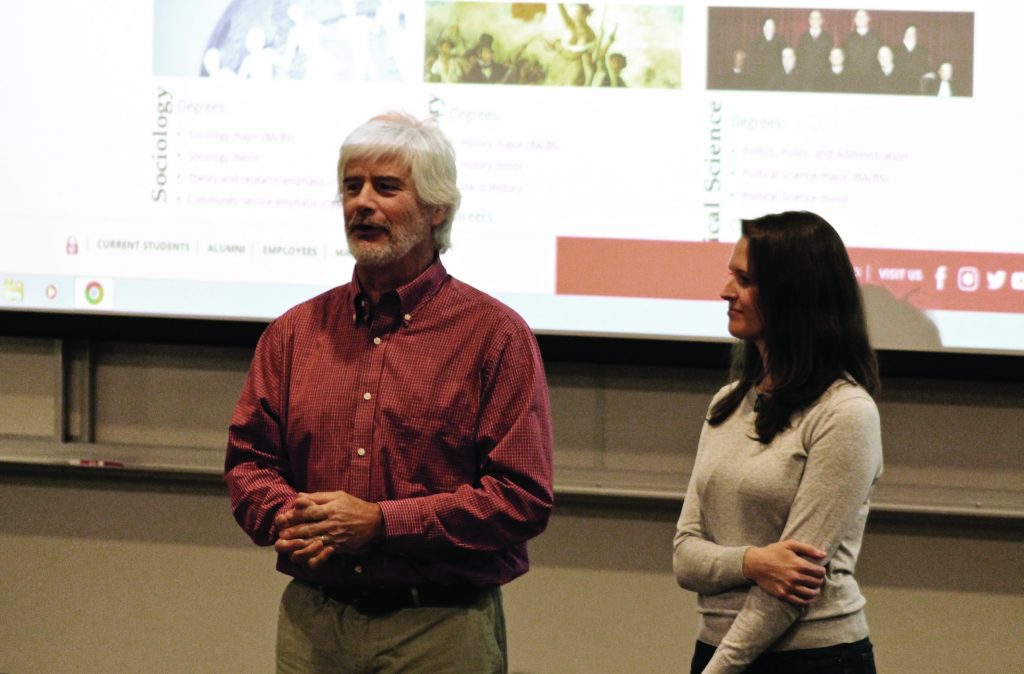
Bailey Thompson | News Editor
On Nov. 28, a group of Western’s faculty and staff filled the lecture hall of the Health and Wellness Center to hear from professionals about the implications of the 2018 Midterm Election. By the time that the presentation started, a number of students even stood in the back of the room since so many people were in attendance.
Dividing the presentation up by first focusing on Oregon ballot measures and then looking at the larger cultural shifts that were suggested by the national results, Dr. Earlene Camarillo and Dr. Ed Dover shared insights with the community.
Starting off, Dr. Camarillo, a political science professor at Western who is a specialist in American government, spoke about each of the five ballot measures that were voted on in the most recent election and what Oregonians should glean from these results. Camarillo looked first at a few of the measures that failed which she saw as being more straight-forward: Measures 104, 105 and 106.
Then, after addressing the reasons why each of these failed, she went on to address the more confusing of the failing measures: 103, which proposed banning a tax on groceries.
“We often see a lot of similar pieces of legislation come through Oregon and Washington — often similar values — so it’s kind of curious as to why Washington passed this, and Oregon didn’t,” said Camarillo. She hypothesized, however, that one reason why this might be the case is that the purpose and extent of the measure was unclear to a number of Oregonians.
“There is no grocery tax in Oregon, and so I think that confused a lot of voters. They didn’t see why it was necessary,” said Camarillo. She added that people generally vote no on measures that they don’t fully understand, since they don’t want to be stuck with the negative consequences of an ambiguous law.
Camarillo also touched on Measure 102, the only passing measure which was successful due to the bipartisan support it received.
All in all, Dr. Camarillo shared that even though this year had comparatively fewer measures on the ballot, they were largely issues of national importance, which led to a significant investment of 11 million dollars from out-of-state donors being invested in them.
After discussing these local implications, Dr. Dover, a retired political science professor from Western, talked about the national trends that were highlighted through various congressional races.
He stressed that it is important to not only look at the number of seats that each party currently has, but also how many that they had before, in order to get a fuller understanding of the way that beliefs are shifting. In this sense, the democrats were very successful both with governor seat and representative seats, as they experienced a net gain of 40 in the house of representatives alone.
The biggest shift that can be observed, Dover claimed, is in the realignment of the way that a lot of women are choosing to vote.
“College-educated women in urban and suburban areas have moved overwhelmingly to the Democratic Party. It is significant, and it is what caused most of the change in this particular election,” said Dover.
Keeping this shift in mind, Dover predicted trouble for President Trump in the 2020 election.
“Donald Trump has not really gained any support from what he had before — people who were against him are generally still against him and some of the people who were for him have turned against him,” said Dover.
All things considered, it will be interesting to see how these trends play out as the United States moves toward the 2020 election cycle.
Contact the author at howlnews@wou.edu
Photo courtesy of Bailey Thompson

